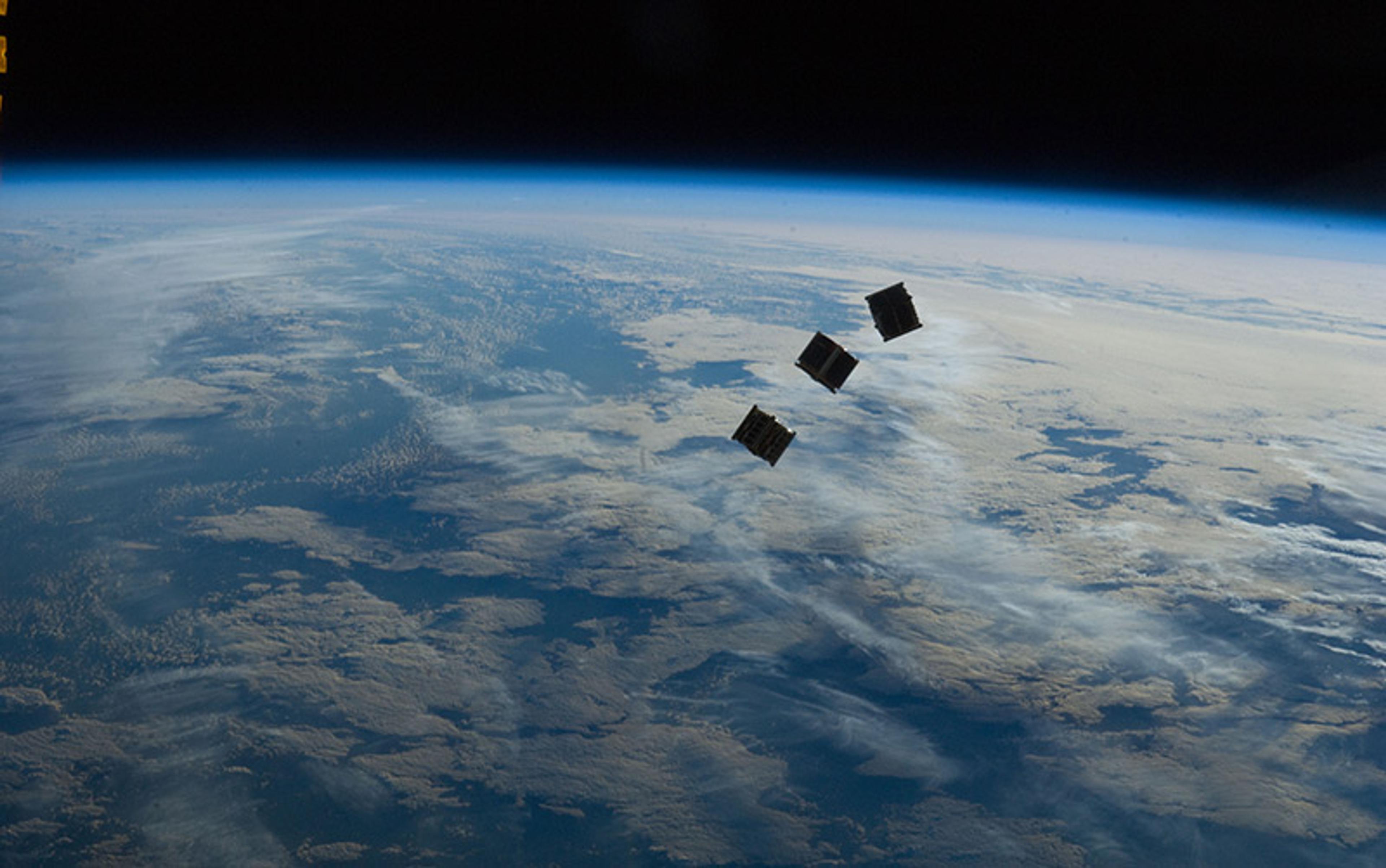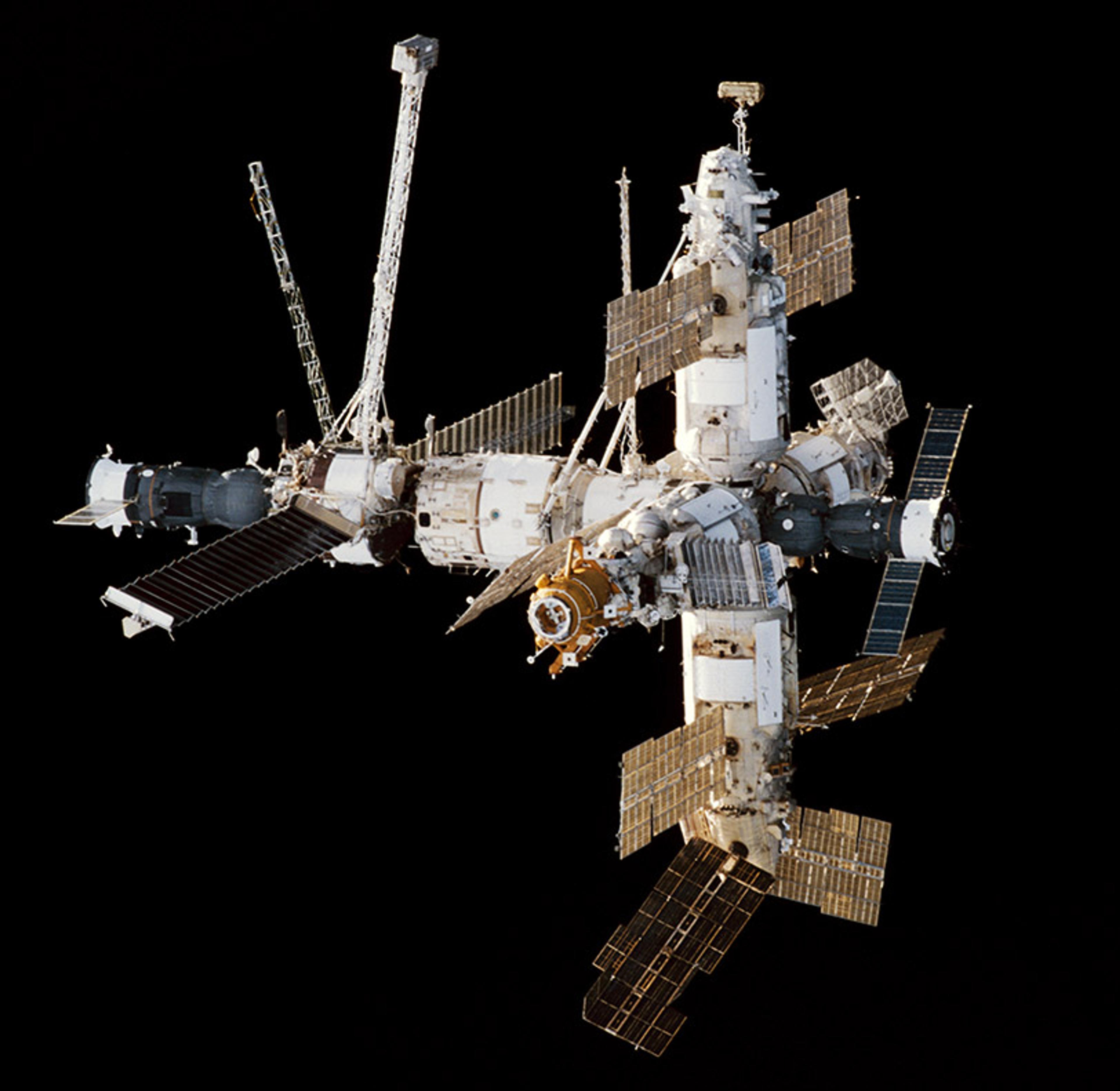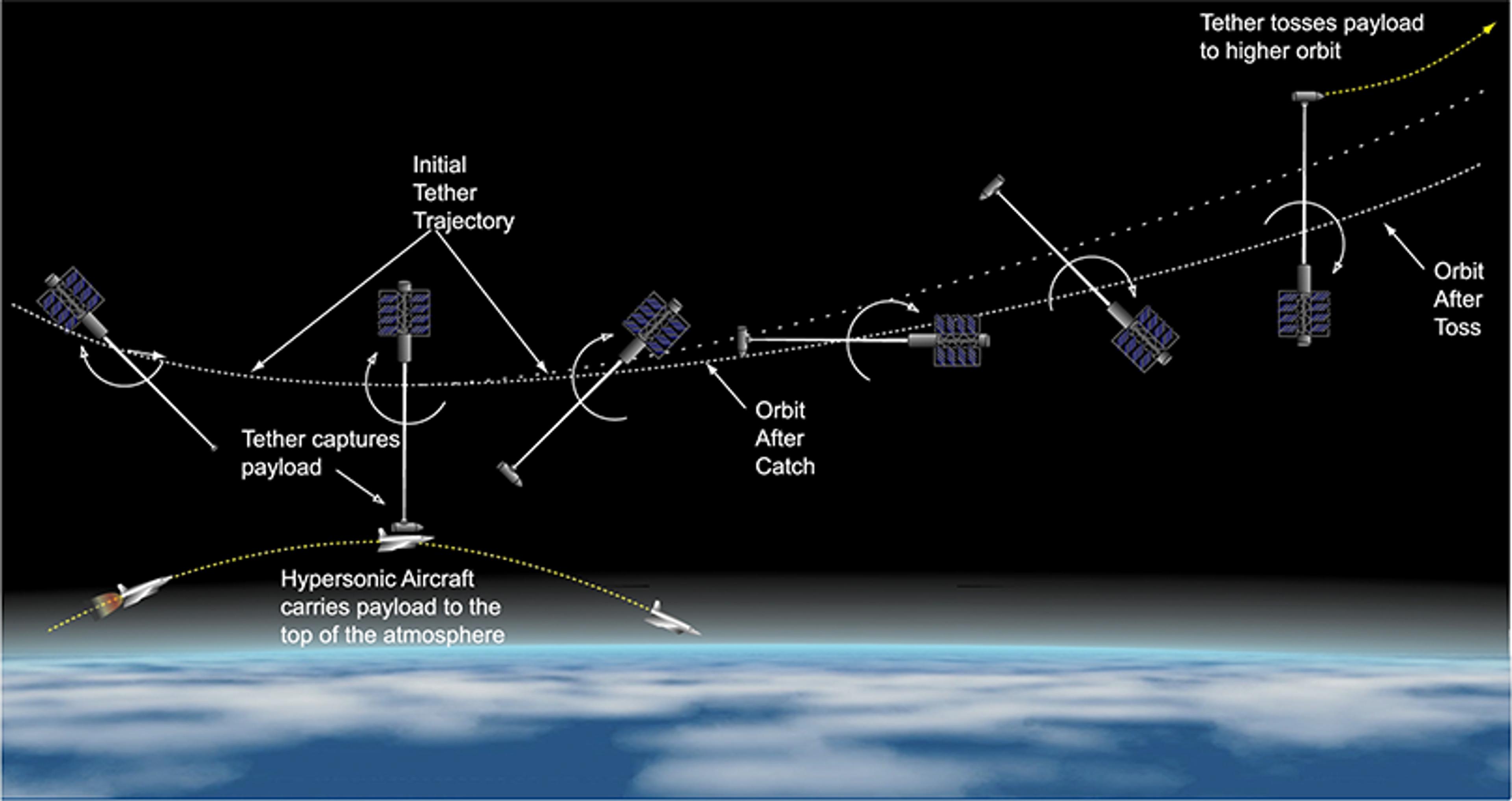Every human-made object sent into orbit around Earth will meet a fiery death. It will fall out of orbit, and be promptly eradicated by our atmosphere, or else be left for dead in an orbital graveyard of decommissioned spacecrafts, destined to pollute our exosphere and slowly but surely follow the same sacrificial path back to our home planet.
The first, more violent choice is preferred. When the life cycle of a spacecraft ends and is formally decommissioned, its mere presence in orbit is a hazard. To sustain it would be costly. Required resources include the labour force to follow and study its movements, along with fuel to keep it on track. But to what end? And the effort would be greater for crafts that have been up there for years if not decades – because their technology would already be outdated. Governments and investors legitimately question preserving stations and satellites instead of investing in the development of new ones. Such discussions took place last year regarding the Hubble Space Telescope, which narrowly escaped decommissioning following the successful launch and operation of the James Webb Space Telescope. But if such an object is left for dead in space without supervision and direction, it eventually becomes debris – threatening, uncontrolled metal that could crash into other functioning crafts, including inhabited ones. The size of the debris would not matter; even a speck could be enough to cause a catastrophic collision. In 2016, such a speck was enough to chip at the window of the International Space Station’s Cupola module; if it had been any larger than a centimetre, it could have penetrated the shields of the Station’s crew modules.
The threat is ever-growing. As of July 2023, the North American Aerospace Defense Command was tracking more than 44,900 space objects, and that number concerns only objects of a significant size. Furthermore, low Earth orbit harbours a multitude of space debris pieces accumulated over 65 years of space missions, including defunct satellites, fragments resulting from collisions, and miscellaneous debris from activities like stage separations. A dead Soviet spy satellite and a used Soviet rocket stage came within 6 metres of each other in January this year; a full-on collision between those two objects would have created thousands of dangerous new pieces of debris. As of 2020, 8,000 metric tons of debris are estimated to be in orbit, a figure that is expected to increase. With no concrete plan yet for cleaning up this debris, controllers have no choice but to manoeuvre spacecrafts when potentially hazardous debris approaches, and hope for the best.

Tiny CubeSat satellites launched from the ISS on 4 October 2012. Photo courtesy of NASA
I’ve been studying the problem for years. Given my background in architecture with a focus on space structures, I started by envisioning lunar bases and extraterrestrial habitats. Every blueprint I created was tailored to a specific lunar landscape; at the heart of this pursuit was development of construction techniques grounded in technology we could deploy now. However, as I dived deeper into the practicalities of these projects, a formidable conundrum unfurled – one that transcends the realm of architecture and echoes the intricacies of space exploration at large.
The quandary revolved around the complex logistics of ferrying essential materials across the cosmic expanse. The crux of the matter extends beyond architectural innovation, encompassing the critical challenge of establishing an enduring and reliable connection between our home planet and these distant extraterrestrial outposts. While using resources on the Moon for some of the construction holds promise, a stable tether to Earth remains essential throughout each habitat’s lifecycle. This multifaceted puzzle spurred an alternative avenue of investigation, one that combines engineering ingenuity with sustainable principles to tackle the mounting predicament of space debris – what if the tether could be the space debris itself?
Failed missions contribute to the quantity of space debris in a steady way
The first reason to halt the creation of space debris is the inherent wastefulness of the practice. As it stands, traditional rocket launches are a significant impediment to sustainable space exploration. Even supposedly reusable tech, for instance, SpaceX’s Falcon 9, is unsustainable – not just wasting fuel, but the rocket stages that are cast off into Earth orbit and the payloads themselves.
The space launch industry produces fewer atmospheric emissions than aviation, and perhaps that has contributed to a lack of urgency. However, this comparison can be misleading, because rockets release pollutants at higher altitudes, potentially leading to longer-lasting atmospheric effects. There is also the concern that carbon particles from rocket emissions might inadvertently contribute to geo-engineering Earth, absorbing heat and exacerbating climate change; black carbon emissions from rockets have nearly 500 times the heat-trapping capability of all other sources of soot combined, intensifying the warming effect. Current rocket launches, whether reusable, horizontal or traditional, all rely on the same propellant, collectively releasing around 1 gigagram of black carbon into the stratosphere each year. With launches projected to increase, this annual amount could surge to 10 gigagrams within a few decades.
And with launches increasing, a greater number may fail – even if the percentage of failures stays the same. As long as crewed missions with astronauts are meticulously prepared and safeguarded, catastrophic events are exceptionally rare. However, the same cannot be said for commercial missions. Between 2000 and 2016, almost one in three small-satellite missions failed, with the rate increasing as yearly launches rose. Those failed missions contribute to the quantity of space debris in a steady way.
Could we recycle all this space trash and use it again? ‘In the modern sense, recycling is inexorably bound to concepts of sustainability, dwindling reserves, ecological destruction, and essentially cost, both pecuniary and environmental,’ write Victoria Sainsbury and Ruiliang Liu, two experts in archaeology and the history of art. But it’s also an ancestral practice driven by necessity and symbolism.
Artefacts made from stone, minerals, mortar, textiles, pottery and bones demonstrate physical reshaping and repair, embodying the practical reuse of the same material. While materials like metal and glass, which can be melted and recast, may not visibly display these changes, they too have been subject to invisible recycling over centuries. Such objects changed purpose and use throughout each iteration and rebirth, and the symbolism or history behind them usually isn’t factored in.
Spolia, the Latin word for ‘spoils’, are defined as architectural fragments taken out of their original context and reused in a different context; essentially, pieces of structures transplanted into different structures. An example of unintentional usage of spolia is the Mausoleum at Halikarnassos (modern-day Bodrum in Turkey). Following its burial due to an earthquake, both the Knights of St John and the Turks, who later settled in the region, viewed the former monument as a convenient source of construction materials, using spolia to build a castle and houses, respectively.
Occasionally, specific fragments and artefacts were intentionally selected for symbolic meaning. For instance, at the Arch of Constantine in Rome, sections of sculptures originally dedicated to Marcus Aurelius and Trajan were incorporated to symbolise the comparable greatness of Constantine. Similarly, during the Byzantine era, it became common to repurpose columns from ancient Greek temples and integrate them into churches, symbolising the triumph of Christianity.
Recycling materials in the microgravity environment entails unique technical challenges and risks
Preserving the history of space exploration is a powerful reason to keep old space structures intact. Back in 2007, the Chinese military used a ground-based missile to hit and destroy its ageing Fengyun-1C weather satellite while in orbit. The anti-satellite test created more than 100,000 pieces of debris orbiting Earth, with about 2,600 of them more than 10 centimetres across, according to a NASA estimate. In 2009, the abandoned Russian satellite Kosmos 2251 collided with a working satellite deployed by the US telecommunications corporation Iridium, resulting in a massive release of space debris. That incident, together with the 2007 Chinese anti-satellite missile test, is responsible for the majority of spacecraft fragments currently hurtling around Earth.
Now the crafts – relics of an important and fascinating past – are shattered to bits. Preserving such structures instead would provide insights into the space race, the Cold War, global politics, government and business expenditures, cutting-edge technologies, and the interconnected stories of generations. As tangible links to significant milestones in space exploration, they offer a window into the triumphs, challenges and endeavours that have shaped humanity’s journey beyond our home planet. These space remnants offer a multifaceted narrative about human exploration of the cosmos and our values here on Earth. At the same time, polluting space with debris tells a different story, the tale of a consumer-driven, throwaway culture with little perspective on its own legacy, intelligence or drive.
As we venture back into space exploration, the idea of recycling has significant obstacles to overcome. We know that launching equipment and supplies into low Earth and geostationary orbit comes with a hefty price tag, and adding recycling equipment to the mix only adds to the expense. Furthermore, recycling materials in the microgravity environment entails unique technical challenges and risks. Despite these hurdles, the motivation is there. The European Space Agency, for example, has recognised the potential of recycling technologies in space and is exploring circular economies beyond Earth’s atmosphere. The main focus is in-orbit servicing technologies, geared initially towards smaller-scale objects, which would pave the way for repairing, upgrading and refuelling satellites in orbit, while also addressing the growing concern of space-debris removal. Northrop Grumman’s Mission Extension Vehicle (MEV) programme, for instance, involves spacecrafts designed to rendezvous with and dock to a commercial geosynchronous satellite to provide life-extension services. MEV-1 successfully docked with the 20-year-old satellite Intelsat 901 in 2020, while MEV-2 docked with Intelsat 1002 in 2021. The first practical benefit is the potential reduction in launching new materials from Earth; we could also save valuable space and weight on spacecrafts, enabling longer and more complex missions.
Soon, satellites are expected to carry less fuel and larger instruments. The goal is for them to be made of modular, easy-to-assemble parts, designed with features that allow service and disposal of worn-out parts in orbit. And, for the same reason that electronics plugs and sockets have standard shapes, discussions on standardised docking mechanisms have begun to make it easier for one model of servicing spacecraft to latch on to different satellites. Despite the initial promise, extending the life of satellites offers only a temporary solution to the space junk problem, and merely delays the inevitable: the rapid obsolescence of technology and the escalating need for repairs, in which the servicing spacecrafts would consume more fuel, potentially offsetting any gains.
The ISS will become the biggest source of space junk of all time
It’s become increasingly clear that space constructions have a finite lifespan under the current approach. In this context, the only practical option that remains is raw material extraction; salvaging valuable components and materials from space debris, to fabricate new spacecrafts and undertake repairs. And, once the material is extracted, their carcasses would be discarded into the graveyard orbit once again.
With [Mir] will perish a Bible, a Koran, 11 tonnes of scientific equipment, more than 100 books left behind by astronauts, a ‘greenhouse’ of experimental crops, personal items left by more than 100 visitors, uninvited fungi, a photograph of Yuri Gagarin, the first man in space – and the hopes and dreams of a nation.
Thus wrote Amelia Gentleman and Tim Radford in The Guardian in 2001, when the Russian space station was decommissioned and fell to Earth. The Russian space agency chose to see Mir as a defective and decaying mass of rusting machinery, and as Sergei Gorbunov, the agency’s spokesman, told the paper:
The technology is outdated and we don’t have the money for repairs. No research is being carried out on board and recent missions have been devoted exclusively to repairing Mir. There’s no longer any point to Mir.
Yet, to the public, Mir embodied an era of cosmic achievements, 140 metric tons of intellectual metal. This intellectual quality similarly permeates the very material of the International Space Station (ISS); its metal has seen more than 250 individuals from 21 countries who have visited, an astounding 269 extravehicular activities conducted as of now, and the completion of more than 3,000 experiments while traversing billions of miles in space. Its significance, though, extends far beyond its scientific accomplishments. The ISS, the joint project of five space agencies from 15 countries, was first launched in 1998, and has been continuously occupied since November 2000. It was the crowning achievement at the beginning of the 21st century, the symbol of science, diplomacy and international collaboration in a post-Cold War world, where space is viewed as the common inheritance of all people. ISS is the largest artificial object in orbit around Earth, weighing 420 metric tons, and it cost an estimated $150 billion to build and operate.

Approach view of the Mir Space Station viewed from the Space Shuttle Endeavour during the STS-89 rendezvous. Photo courtesy of NASA
It is also expected to be decommissioned in the 2030s. To be crashed, in other words, into the ‘spacecraft cemetery’, Point Nemo in the Pacific Ocean, the point that is farthest from land. The ISS’s annual $3 billion cost, coupled with technical challenges in maintenance after the end of the space shuttle programme, and the difficulty of transporting large replacement parts, all contribute to the possibility that it will become the biggest source of space junk of all time.
There is a solution to all of this: a skyhook, a space structure that could lift materials from Earth to near-Earth orbit and beyond. The ability to deal with junk and construct structures in space requires a paradigm shift, one that encourages us to seek opportunities and potential that might otherwise go untapped.
In this case, the untapped resource is the common denominator shared by all the space objects we’ve created: mass. From the early days of meticulous payload calculations to the present, the accumulation of mass in Earth’s orbit could be a surprisingly valuable asset.
Consider the sheer complexity and expense of sending objects into space. Rockets, with their massive fuel requirements and substantial failure rate, still face a formidable challenge to reach orbital altitudes. This alone makes any object that manages to overcome this barrier an invaluable asset. Moreover, the presence of manufactured space objects in orbit comes with another advantage – control. Unlike natural objects like asteroids, whose orbits could be unpredictable and chaotic, the objects we’ve generated can be precisely positioned and tracked. With control over their orbits, we can predict collisions, optimise trajectories and avoid potential hazards, easing the logistical burden. Envisat, for example, one of the largest Earth observation satellites ever launched, with a length of 26 metres and a width of 10 metres, ceased communications in 2012 and transformed into one of the largest pieces of space junk in orbit; its trajectory is still being closely monitored by us.
Envisat has the potential to become a linchpin for the next step in spaceflight – non-rocket space-launch systems like a skyhook, which could require an anchor, a massive object to provide stability, that is already in space.
The most promising candidate for a counterweight turns out to be the ISS
The idea of a skyhook has been under study for half a century now; it would take the form of a long and strong tether extending from a base station on Earth’s surface into space. The other end of the tether, a counterweight like Envisat, would remain in orbit around Earth. As the tether rotates, the counterweight generates centrifugal force, creating tension in the tether. Spacecrafts and payloads can then be attached to the tether and released into space when they reach the desired velocity, essentially ‘hooking’ them into orbit. The counterweight’s substantial mass and its fixed position in space would act as the pivot point for the entire system, allowing the tether to maintain tension and transfer momentum. Depending on the tether’s length, materials and the specific rotational characteristics of the skyhook, the momentum it imparts to payloads could potentially extend their reach beyond Earth’s orbit to reach other celestial bodies. Further into the future, skyhooks could span across three celestial bodies – Earth, the Moon and Mars – forming a seamless interconnected network.

Diagram illustrating the HASTOL skyhook concept. Courtesy of Stanford University
In 2000, Boeing conducted the Hypersonic Airplane Space Tether Orbital Launch (HASTOL) study, which investigated the feasibility of using a skyhook to launch payloads into orbit. The authors of the study stated that we do not need ‘magic materials’ like carbon nanotubes to make a skyhook’s tether, and that existing, already commercially available materials will do. The main challenges are in the design and construction of the skyhook, such as ensuring that it is strong enough to withstand the forces involved and that it is protected from the effects of atomic oxygen. In the follow-up phase, the study concluded that there are no ‘fundamental technical show-stoppers’ to the idea.
This study was primarily focused on the feasibility of using a skyhook to launch payloads into orbit, and it didn’t delve deeply into the specifics of the counterweight. But once we start designing space-based tether systems, we’ll reach a point where the concepts of recycling, cultural preservation and spaceflight converge into a single, comprehensive solution.
The most promising candidate for a counterweight turns out to be the International Space Station, but marshalling that potential requires several key steps. First, we’d have to shut down the station and remove hazardous elements. Next, we’d have to depressurise and reinforce the structure to maximise stability. Additional propulsion would be required to position the station at a higher altitude as well. Once the ISS is in position, designing attachment points capable of withstanding the forces imposed by the rotating cable would be critical. When those points are in place, the skyhook cable could be deployed and attached to the station.
According to the latest skyhook designs, the counterweight must be significantly larger than the payload, with a minimum ratio of 1,000 times the payload’s size. So, in order to boost the skyhook’s capability to handle larger payloads, additional counterweights, such as defunct satellites, might be strategically attached to the ISS, effectively increasing its mass and efficiency, a retro-fusion of sorts.
What began as a combination of technological progress and waste – the accumulation of mass in space – has now become a valuable asset, reshaping the foundation of spaceflight. Embracing the untapped potential of space objects and debris would lead us to a design shift that goes beyond viewing objects as potential pieces of a greater whole. This shift would guide their conceptualisation from the bottom up, fostering a new approach where each object is informed, designed and constructed with the intention of preserving and repurposing it within a sustainable and resourceful paradigm of spaceflight, effectively preserving cultural value and transforming our current wasteful system.
Clearly, the imminent destruction of the ISS represents a telling decision of our modern ways, as well as a missed opportunity to preserve an invaluable historical artefact of human space exploration. A missed opportunity, also, to accelerate progress. By integrating retired structures into new systems, we construct a dynamic archive, a living tapestry showcasing our progress in space expansion and enabling exploration of new worlds.






